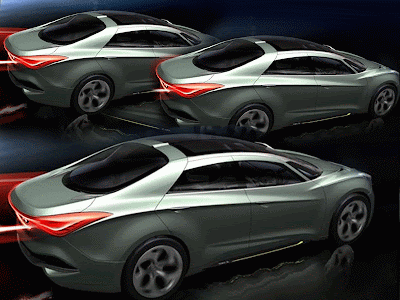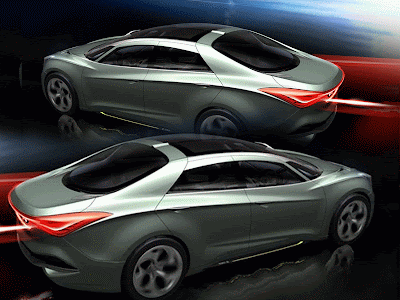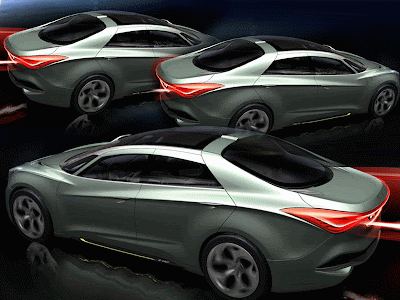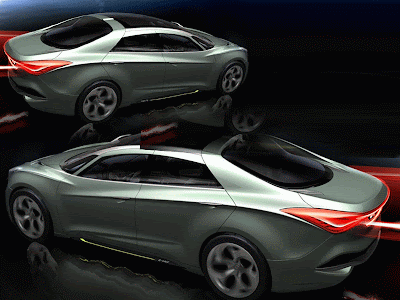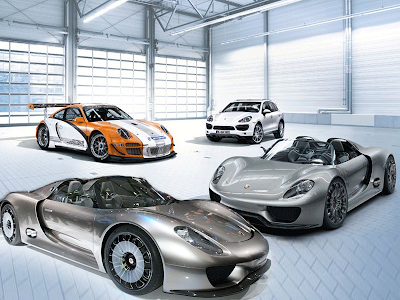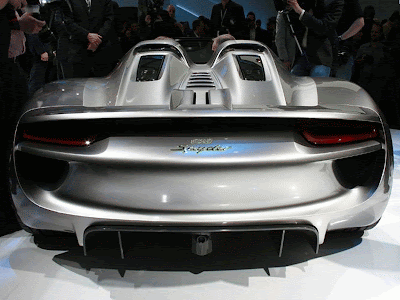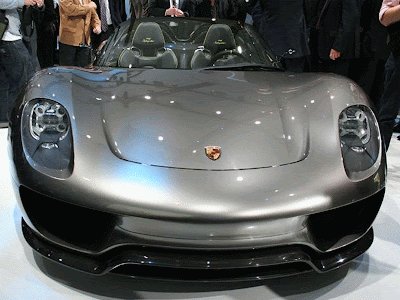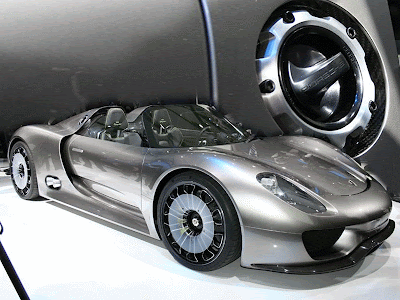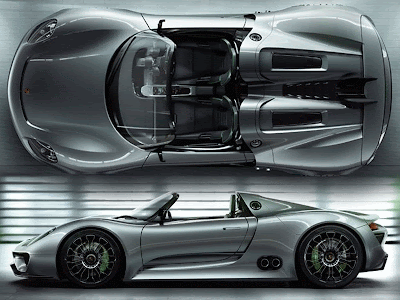The 2011 Porsche 918 hybrid concept is set to debut tomorrow at the 2010 Geneva Motor Show. This is not your average hybrid like Toyota Prius or Honda Insight. With four other debuts planned for this year’s Geneva auto show, Porsche saved one surprise for just before the show opened. Behold the 918 Spyder concept, a radical Carrera GT–like supercar that employs Porsche’s latest take on enviro-firendly performance technology.
2011 Porsche 918 Spyder Hybrid Concept Next-Gen Porsche Supercar
"The strategic aim is to demonstrate that even a supercar can be environmentally friendly. Porsche 918 hybrid concept promises total driving pleasure—and a clear conscience. This is a trendsetting and sustainable premium product that uses the issue of social acceptability to its advantage. And it reflects the legacy of Ferry Porsche, who was convinced that sports cars would never go out of fashion.”
2011 Porsche 918 Spyder Hybrid Concept Next-Gen Porsche Supercar
“In a way, the 918 is two cars in one,” explains the soft-spoken design director. “Its character can change from mild to wild and vice versa—mild as in wafting along in eco mode, wild as in switching the drive program selector to sport or race. In mild, the car benefits from the relatively low weight and strong aerodynamic performance. In wild, it improves downforce and stability by extending the adjustable wing, and it raises the two ram-air intake scoops to further enhance thermodynamic efficiency.
2011 Porsche 918 Spyder Hybrid Concept Next-Gen Porsche Supercar
Design-wise, it was our mission to visualize a brand-new, unique, and revolutionary vehicle concept. Big wheels were a must, the stance had to be positively ground-hugging, and an unmistakable front end was imperative, as was a pacesetting mix of classic curvatures and contemporary creases. There is no doubt that the Porsche 918 Spyder marks an important evolution of our design language, certain elements of which are bound to appear on future production models.
2011 Porsche 918 Spyder Hybrid Concept Next-Gen Porsche Supercar
Moving in the same direction as Ferrari with its 599 Hybrid concept, Porsche is laying its cards on the table with this dual-purpose supercar plug-in hybrid. Said to “combine high-tech racing features with electric mobility to offer a fascinating range of qualities,” the 918 Spyder concept borrows the mid-mounted 3.4-liter V-8 engine from the RS Spyder race car, singing a symphony of 500 hp up to a 9200-rpm redline. That covers the race portion of the equation, while electric motors found at both the front and rear axles that combine for an output of 218 hp handle the electric mobility. These motors, able to move the car on electric power alone, make the 918 a full hybrid, which Porsche claims has a range of 16 miles using the liquid-cooled lithium-ion battery found behind the passenger compartment. Porsche claims the concept is capable of hitting 62 mph in under 3.2 seconds, topping out at 198 mph, lapping the Nürburgring in 7 minutes and 30 seconds (faster than a Carrera GT), and achieving fuel economy of up to 78 mpg, but certainly not while laying down those figures.
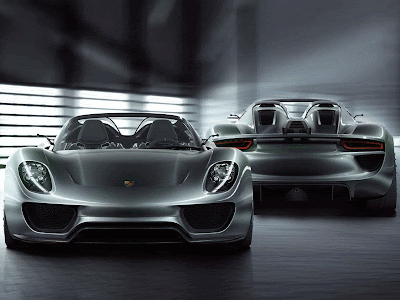
2011 Porsche 918 Spyder Hybrid Concept Next-Gen Porsche Supercar
In parallel-hybrid rear-wheel-drive mode, the superclever Porsche can run on gasoline, on electricity, or on a combination thereof. The front wheels, though, are driven on demand by the so-called electric portal axle. A button on the steering wheel allows the driver to handle the 918’s multiple-personality disorder, selecting from E-Drive, Hybrid, Sport Hybrid, and Race Hybrid modes. E-Drive is exactly that, using the stored energy in the batteries that’s supplied through plugging the car in at home or captured from regenerative braking. Hybrid mode combines the two drive systems, allowing the driver to either conserve fuel or flog the car to their heart’s content. Sport Hybrid is a step to the performance side using both gas and electric systems with power biased to the rear wheels and torque vectoring for improved handling. Greenies need not apply to the Race Hybrid setting, which squeezes out every bit of oomph from all onboard systems and even features an “E-Boost” push-to-pass button that feeds additional electric power for overtaking. As if the 500-hp gas motor needed any help.
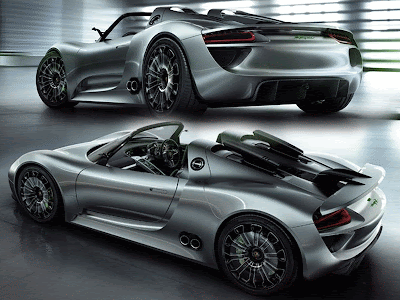
2011 Porsche 918 Spyder Hybrid Concept Next-Gen Porsche Supercar
If required, the mighty V-8 can even act as a supersize range extender -- by driving the rear electric motor, which in turn supplies the lithium-ion batteries. In E-mode and with the batteries fully charged, a feather-footed driver can achieve a zero-emissions range of up to fifteen miles. The plug-in charge time varies from two to seven hours, depending on the available voltage. The green-colored brake calipers advertise the energy-regeneration system, which feeds the battery pack behind the seats. The energy cells are also charged when the vehicle is coasting.
2011 Porsche 918 Spyder Hybrid Concept Next-Gen Porsche Supercar
The concept also uses advanced features like variable aerodynamics for increased efficiency and added downforce at high speeds, as well as a Range Manager that uses the navigation system to present the predicted range the car is able to roam in its various modes.









































